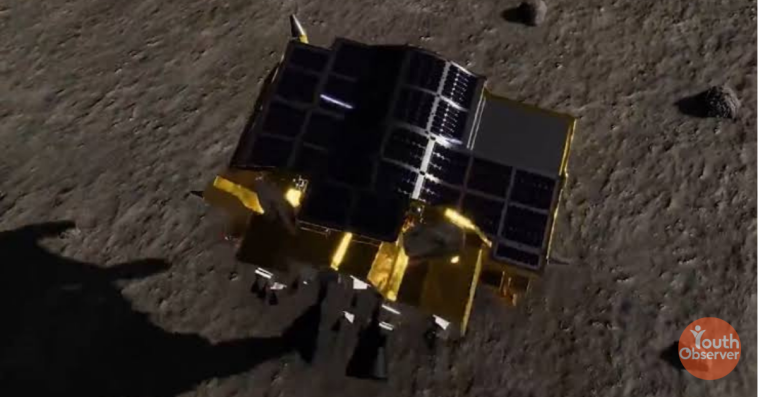Japan’s historic lunar mission, “Moon Sniper,” has successfully landed on the moon’s surface, but the condition of the spacecraft remains unknown. The Japan Aerospace Exploration Agency (JAXA) confirmed the touchdown shortly after 10:20 a.m. ET on Friday (12:20 a.m. Saturday Japan Standard Time) through telemetry data displayed during their live broadcast.
However, JAXA officials are currently assessing the lander’s status and have scheduled a press conference for further updates. If confirmed successful, this landing would make Japan the third nation in this century, and the fifth in history, to achieve such a feat.
The “Moon Sniper,” also known as the Smart Lander for Investigating Moon (SLIM), launched in September and carries advanced precision technology for a pinpoint landing. Unlike previous missions with broader target zones spanning kilometers, SLIM aimed for a landing site just 100 meters (328 feet) across. To achieve this unprecedented accuracy, the lander’s “smart eyes” – an image-matching navigation system – autonomously adjusted its descent based on real-time surface photographs, allowing it to touch down safely on a sloped area.
The world awaits further updates from JAXA as they analyze the landing and assess the “Moon Sniper’s” condition. This mission represents a significant milestone for Japan’s space program, pushing the boundaries of lunar exploration with its innovative precision landing technology.
Moon Sniper’s Target: Secrets Beneath the Surface
The “Moon Sniper” aims for a precision landing near the Shioli crater, nestled within the ancient volcanic plains of the Sea of Nectar. Just south of Apollo 11’s iconic touchdown site in the Sea of Tranquility, this location offers a unique opportunity to delve into the moon’s past.
Landing there will allow the probe to briefly study rocks ejected by meteorite impacts and scattered around the crater. These fragments are like cosmic time capsules, holding clues to the moon’s formation and composition. Analyzing their minerals and structure could offer a clearer picture of our satellite’s history.
While landing near rocky, sloped terrain is typically considered risky, JAXA is confident in its “Moon Sniper.” The lander boasts cutting-edge technology designed for pinpoint accuracy, paving the way for safe navigation amidst lunar debris. This bold approach not only promises scientific treasure but also pushes the boundaries of lunar exploration.
Triumphs and Tribulations in the New Space Race
The past year has witnessed a flurry of lunar missions, igniting a new space race filled with both historic achievements and sobering setbacks.
India proudly joined the elite club of nations capable of soft-landing on the Moon, with its Chandrayaan-3 successfully touching down near the south pole in August. This marked a significant milestone, as the region’s challenging cratered terrain had previously claimed several lander victims.
Unfortunately, not all missions enjoyed similar success. Japan’s Hakuto-R lander plummetted onto the lunar surface in April, while Russia’s Luna-25 suffered a similar fate in August. The first U.S. lunar lander of the century, Astrobotic’s Peregrine, also met a fiery end, its journey cut short by a fuel leak.
Yet, the quest for lunar exploration continues, driven in part by the prospect of water ice hidden in the permanently shadowed craters of the south pole. This resource could provide drinking water or fuel for future deep-space missions, making accessing it a primary objective.
Landing in this treacherous region demands pinpoint accuracy and robust navigation, something JAXA hopes its “Moon Sniper” can achieve. If successful, SLIM’s lightweight design and advanced precision technology could offer a novel solution for navigating both the Moon’s challenging south pole and the Martian surface in the future.
The current lunar landscape may be a tapestry of successes and failures, but it also reflects the unwavering human spirit of exploration. Each attempted landing, regardless of outcome, pushes the boundaries of technology and paves the way for further lunar adventures. The race to the Moon may be heating up, but it’s the pursuit of knowledge and potential resources that truly fuels this celestial competition.

